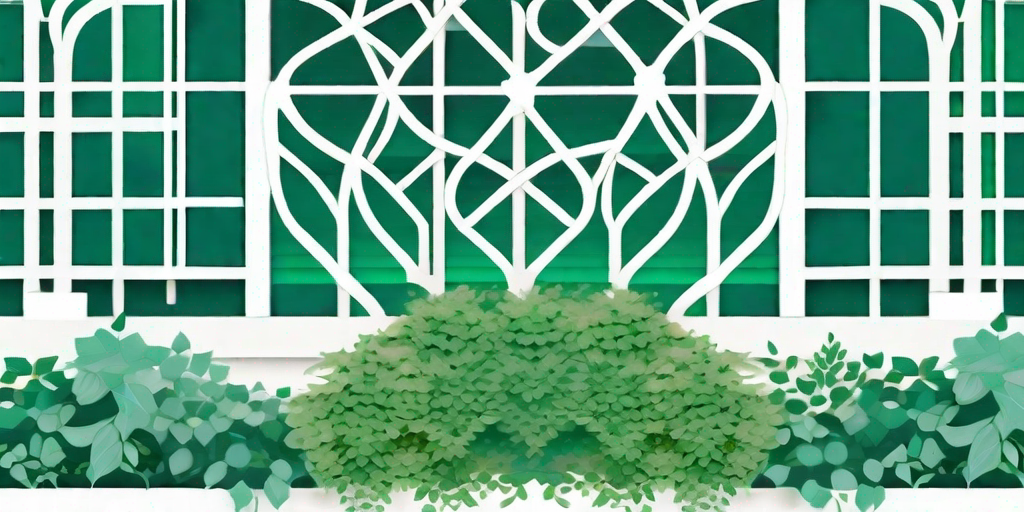
Welcome, green-thumbed enthusiasts and aspiring gardeners alike! If you're looking to add a touch of exotic elegance to your garden, you've come to the right place. Today, we're diving deep into the world of Persian Ivy, a versatile and hardy plant that can transform your garden into a lush, green paradise. So, grab your gardening gloves, and let's get started!
The Charms of Persian Ivy
First things first, let's get to know our star plant a little better. Persian Ivy, scientifically known as Hedera colchica, is a species of evergreen climbing plants native to the Near East. It's a popular choice among gardeners for its large, heart-shaped leaves and its ability to thrive in a variety of conditions. But the appeal of Persian Ivy goes beyond its physical attributes.
One of the most charming aspects of Persian Ivy is its versatility. This plant is a real team player in the garden, happy to play a supporting role as ground cover, or take center stage as a climbing vine. Whether you're looking to cover a bare wall or add some greenery to your patio, Persian Ivy is ready to step up to the plate.
And let's not forget about its resilience. Persian Ivy is like the superhero of the plant world, able to withstand harsh weather conditions, poor soil, and even neglect (although we don't recommend that!). This makes it an excellent choice for both seasoned gardeners and those just starting to flex their green thumbs.
Planting and Caring for Your Persian Ivy
Planting Your Ivy
Now that we've sung the praises of Persian Ivy, let's get down to the nitty-gritty: planting it. The best time to plant your ivy is in the spring or fall, when the soil is moist and temperatures are mild. Choose a spot with partial to full shade, as Persian Ivy prefers cool, shady spots over hot, sunny ones.
When it comes to soil, Persian Ivy isn't picky. However, it does prefer well-drained soil, so if your garden tends to hold water, consider adding some organic matter to improve drainage. Once you've chosen your spot and prepped your soil, dig a hole that's wide and deep enough for the plant's root ball, place the plant in the hole, and backfill with soil. Easy peasy!
Caring for Your Ivy
Once your ivy is in the ground, it's time to switch to maintenance mode. Water your plant regularly, especially during dry spells. While Persian Ivy is drought-tolerant, it will appreciate a good drink now and then. However, be careful not to overwater, as this can lead to root rot.
As for feeding, a slow-release fertilizer applied in the spring can give your ivy a nice boost. Pruning isn't necessary, but it can help keep your plant in check, especially if it's climbing on structures. Just be sure to disinfect your pruning shears before and after use to prevent the spread of disease.
Common Issues and Solutions
Despite its hardiness, Persian Ivy can sometimes encounter a few issues. But don't worry, we've got the solutions right here.
One common problem is leaf yellowing, which can be caused by overwatering or poor drainage. If you notice your ivy's leaves turning yellow, check the soil. If it's waterlogged, consider improving drainage or moving your plant to a drier location.
Pests can also be a problem, with aphids and spider mites being the most common culprits. If you notice small, discolored spots on your ivy's leaves, it might be under attack. The good news is, most pests can be controlled with insecticidal soap or a strong blast of water from the hose.
FAQs About Persian Ivy
- Is Persian Ivy invasive?
While Persian Ivy can spread quickly, it's generally not considered invasive. However, it's always a good idea to keep an eye on its growth and prune as necessary to keep it in check.
- Is Persian Ivy poisonous?
Yes, Persian Ivy is poisonous if ingested, so it's best to keep it out of reach of children and pets.
- Can Persian Ivy grow indoors?
Absolutely! Persian Ivy makes a great houseplant, provided it gets enough light and isn't overwatered.
Unleashing the Beauty of Persian Ivy
There you have it, folks! A comprehensive guide to unleashing the beauty of Persian Ivy in your garden. With its versatility, resilience, and stunning foliage, it's no wonder this plant is a favorite among gardeners.
So, are you ready to add some Persian Ivy to your garden? We bet you are! Just remember to plant it in a shady spot, water it regularly (but not too much!), and keep an eye out for pests. With a little care and attention, your Persian Ivy will be the star of your garden in no time.
Happy gardening!















